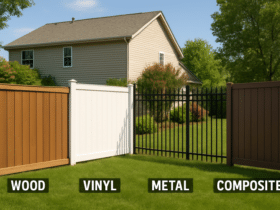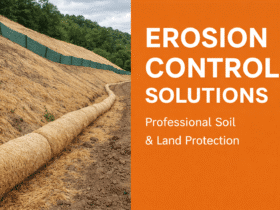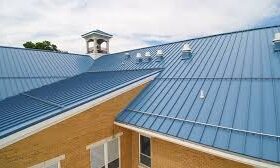Key Takeaways
- Regular inspections help identify and address minor issues before they escalate into more significant problems.
- Keeping gutters clean prevents water damage and structural issues.
- Trimming overhanging branches reduces the risk of physical damage and debris accumulation.
- Addressing moss and algae growth prevents moisture retention and material deterioration.
- Ensuring proper attic ventilation and insulation maintains roof integrity and energy efficiency.
Table of Contents
- Introduction
- Regular Roof Inspections
- Cleaning Gutters and Downspouts
- Trimming Overhanging Branches
- Addressing Moss and Algae Growth
- Ensuring Proper Ventilation and Insulation
- Promptly Addressing Repairs
- Professional Roof Inspections
Introduction
Proper roof maintenance is a cornerstone of responsible homeownership, allowing you to avoid expensive and inconvenient repairs while ensuring the safety and comfort of those living under your roof. Regardless of whether you live in a region prone to torrential rains, scorching sun, heavy snowfall, or high winds, regular roof care provides your home with the fortification it needs to withstand the elements throughout the year. Taking preventive measures not only protects the building’s structure but also the personal belongings and cherished memories stored inside. For homeowners who want to preserve their property’s value and avoid preventable headaches, working with professionals like Glendale roofing contractors provides reliable expertise for all types of residential roofing systems.
Routine upkeep and a strategic, proactive approach to roofing not only extend your roof’s lifespan but can also dramatically reduce the likelihood of unexpected expenses and emergency interventions. Simple maintenance efforts go a long way toward maximizing energy efficiency and keeping both monthly utility bills and insurance premiums in check. With an investment of time or a modest budget for professional help, you can reliably prevent leaks, enhance curb appeal, and safeguard what matters most. Here are some valuable, actionable roof maintenance tips that every homeowner should know.
Regular Roof Inspections
Conducting a thorough roof inspection twice per year, ideally in the spring and fall, should be a standard part of your home maintenance routine. Begin your inspection with a careful visual assessment from the ground. Look for missing, torn, or curling shingles, paying special attention after major storms. Watch for evidence of rust or corrosion on flashing or metal valleys, and inspect for bald spots on asphalt shingles, which indicate granule loss. Discoloration and loose or damaged materials around chimneys, vent pipes, or skylights are also red flags. Inside your attic or upper floor ceiling, look for signs of trouble, such as water stains, mold patches, unusual odors, or deterioration of insulation materials—these often indicate hidden leaks or ventilation problems. Using a detailed inspection checklist can help you walk through each method systematically, ensuring you don’t overlook potential trouble spots until they become major issues.
Cleaning Gutters and Downspouts
Clean gutters and downspouts are your first line of defense against water damage, which can compromise not only your roof but also your home’s foundation and the home’s structural integrity. Gutters channel rainwater and melting snow away from the eaves and siding, while downspouts direct water a safe distance from the base of your house. However, it is all too common for leaves, pine needles, seeds, and even bird nests to quickly clog these systems, especially in areas with mature trees or after seasonal storms. Clogged gutters cause water to back up and pool on the roof or overflow down the siding, creating opportunities for leaks, wood rot, and even ice dams in colder weather. Homeowners should make a habit of clearing out their gutters at least twice a year, typically in the spring and late fall. If large trees surround your home, you may need to clean more frequently. Additionally, ensure that downspouts direct water at least three to five feet away from your foundation to minimize the risk of basement seepage or erosion. The installation of gutter guards can further simplify this task by keeping out larger debris, significantly reducing the frequency and difficulty of maintenance.
Trimming Overhanging Branches
While trees enhance curb appeal and provide much-needed shade during the summer, overhanging branches can create multiple risks for your roof. In strong winds or during a storm, branches are susceptible to snapping or falling, which may crack or puncture roofing materials. Even smaller limbs constantly rubbing or scraping against your shingles will gradually erode the protective surface, making the roof more vulnerable to leaks. In addition to the risk of physical damage, branches that hover over your roof contribute to debris accumulation. This buildup can trap moisture, foster the growth of moss and algae, and increase the weight load on the roof, especially if not removed before heavy rain or snow. Trim tree limbs back several feet away from your house to reduce these risks. Not only does this protect your roof surface, but it also allows more sunlight to reach the shingles, drying them more quickly after precipitation and discouraging the growth of moss or mold. Regular assessment and maintenance of landscaping close to your home should be an essential component of your property care schedule.
Addressing Moss and Algae Growth
Moss and algae are more than aesthetic nuisances; their presence can signify or even cause deeper roofing concerns. When moss takes hold, it acts like a sponge, retaining moisture long after rainfall ends. This moisture accelerates wear and shortens the lifespan of roofing materials, especially shingles, and can even work its way under them, causing warping or dislodgment. Algae, often identified by black or green streaks, tends to spread in humid, non-shaded areas. While it doesn’t cause as much harm as moss, it still retains moisture, promotes the breakdown of shingles, and diminishes the overall appearance of your home. If you notice moss or algae developing, use only roof-approved cleaners to minimize environmental impact and prevent damage to your shingles. Many homeowners opt to install Z Roof’s copper strips along the roof’s ridge. With each rainfall, traces of these metals will wash down the roof, creating an environment that discourages moss and algae from growing. Keeping branches trimmed and debris off your roof also reduces the likelihood of these organisms establishing a foothold. Routine checks and prompt cleaning remove threats before they spread extensively.
Ensuring Proper Ventilation and Insulation
Effective attic ventilation and insulation are often overlooked, yet play a major role in preserving both the comfort and durability of your home. Good ventilation prevents the buildup of heat and moisture during hot weather, effectively extending the expected service life of your roof. If excess moisture is allowed to accumulate, it may cause wooden structures to warp, shingles to age prematurely, or attic insulation to become less effective, all of which can drive up energy bills. In colder climates, inadequate ventilation can cause ice dams to form at the roof’s edge, potentially allowing meltwater to back up under shingles and damage ceilings or walls. Check that your attic has sufficient intake (soffit) and exhaust (ridge or roof) vents, and ensure that insulation is properly installed without blocking airflow. The right insulation keeps interior temperatures more stable, lowering heating and cooling costs, while clear vents allow the entire roofing system to breathe and manage moisture effectively. Periodically check for signs of condensation, mold growth, or insulation displacement, addressing any concerns immediately to maintain indoor air quality and roof performance.
Promptly Addressing Repairs
Delaying roof repairs can quickly turn a small, inexpensive fix into a major, costly project. Issues where shingles are missing, damaged, or shifted—even if only affecting a tiny area—create openings for water intrusion in heavy rain or snow. Similarly, cracked flashing, loose fasteners, or deteriorating vent boots provide a direct path for moisture to enter your home’s structure. Never ignore small leaks or unexplained spots of water damage inside; these symptoms often mask much larger problems developing out of sight. Acting quickly not only saves money but can also prevent gradual, yet extensive, harm to insulation, rafters, drywall, and roofing. Keep an eye on your roof’s condition throughout the year, especially after extreme weather events. If repairs are outside your expertise or involve complex structures, call in professional roofers. This strategy ensures lasting, quality repairs with appropriate safety precautions and warranty coverage.
Professional Roof Inspections
Although diligent homeowners can spot and address many routine maintenance needs, an annual inspection by an experienced roofing contractor remains crucial for complete protection. Professional roof inspectors possess the training and tools to find subtle issues—such as hidden leaks, compromised flashing, or signs of pest activity—that might go undetected in a DIY inspection. They can also assess the overall health of your roofing system and identify risks specific to your local climate or the roofing material in place. Having your roof professionally inspected is particularly important as it ages or if your property has experienced severe weather events, such as hail or high winds. Regular expert evaluations enable you to take timely preventive measures, schedule necessary repairs, and plan ahead for future replacements, thereby minimizing disruptions and preserving your investment for years to come.
Implementing these roof maintenance tips regularly forms the foundation for a durable, weather-resistant home. By staying attentive, performing basic upkeep, and calling in professional help when necessary, you can ensure that your roof continues to shield your family and valuable belongings, maximizing the return on your investment and the comfort of your household.













